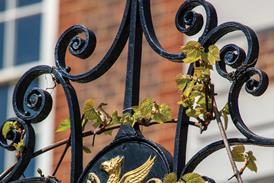Alfresco eating in the garden, balmy nights watching the football season play out its final act, firing up the barbecue and the excitement of four months of parties, festivals and cricket – can it really be happening? Has summer finally arrived?
It may be a little early for a full-blown summer drinking guide, but at this time of year attentions switch from the heavy, grand red wines that saw us through the dark winter months to zippy whites, cherry-flavoured, light red wine and champagne (or, given the state of the economy just now, sparkling wine).
Perhaps more than any other country it is to Italy that I turn to for my spring drinking where, in the last 10 years, quality, particularly of its white wine, has made staggering advances and helped to forge the country’s reputation as a melting pot of interesting wines. Italy is one of the world’s largest wine producers, making up a fifth of the globe’s entire production, yet to many I suspect it still remains slightly unfamiliar. Whereas grape varieties such as chardonnay, merlot, cabernet sauvignon and syrah have slipped into the UK’s national discourse, Italian grapes such as fiano, piedirosso and aglianico seem mysterious and unfamiliar.
It seems strange that a civilisation formed in many respects on food and wine has never been able to produce a winemaking structure that the average drinker can understand. I have lost count of the number of readers who have written to me hopelessly confused by all things surrounding Italian wine.
It is perhaps easiest to approach the subject through the eye of a producer rather than via any geographical area or grape variety. This is because it still feels like a collection of regions rather than a homogenous winemaking country.
Having said that, the one Italian grape variety that everyone knows is pinot grigio, staple of the recent British phenomenon, the pub list, and far too often written off as a bland, featureless wine. This is nonsense. In the right hands, pinot grigio is one of the most versatile, pleasurable, attractive summer wines out there. Though grown mainly in the northern areas of Lombardy and Trentino-Alto Adige, it is in the north east of the country, in Friuli-Venezia Giulia on hills that border the former Yugoslavia, that the varietal takes on its most attractive, fresh, crisp, zippy character.
Michele Specogna’s pinot grigio is a case in point: perfumed, elegant and clean, with a razor-sharp edge and a crisp, mineral, perfumed character.
Another white grape variety worth tracking down is fiano, a wonderful variety that can produce rich, heavily perfumed wines with a nutty character, as well as slight, feminine wines with an appealing dryness. For something a little upmarket, try 2006 Fiano Donnaluna, IGT Paestum, £11.99 (Raeburn Fine Wines, Edinburgh; tel: 0131 343 1159; www.raeburnfinewines.com) an unctuous wine replete with pineapple flavours.
Over in Tuscany, Marchesi de` Frescobaldi, one of Italy’s most important, historic and aristocratic producers, is making a noise with a range of über-expensive red wines. But it is the chardonnay that attracts, with quality that could rival anywhere in the world.
For bubbles, I turn to the terraced hills between the little towns of Valdobbiadene and Conegliano, the home of prosecco, Italy’s delicate, slightly sparkling white wine. Prosecco is a very different drink from champagne and the comparison is a little unfair. Champagne is made from a blend of chardonnay and either pinot noir or pinot meunier grapes. Prosecco is made from the grape variety that gives it its name, along with a little bianco and verdiso. Whereas champagne has its secondary fermentation in the bottle, prosecco is made by the Charmat process, undergoing secondary fermentation in pressurised stainless-steel tanks after the addition of yeast and cane sugar. Champagne has a rich, mouth-filling yeastiness. Prosecco is clean, light and delicate.
A much more useful comparison can be made with the slightly sparkling wines of north Portugal, the vinho verdes, the grüner veltliner grape in Austria or the sparkling wines found in the Loire. Prosecco also goes marvellously well with the delicate, flavours of Japanese food and south-east Asian cuisine. A perfect spring evening.
 Bisol Prosecco Valdobbiadene Crede Pale yellow in the glass, this has a soft apple and citrusy, pear-like flavour. £14.25
Bisol Prosecco Valdobbiadene Crede Pale yellow in the glass, this has a soft apple and citrusy, pear-like flavour. £14.25
 2006 Pinot Grigio ‘Ramato’, SpecognaElegance is the watchword for this interpretation of pinot grigio. A surprising copper colour in the glass, it has an underplayed nose with a hint of wildflowers and apricots. Snappy and crisp on the palate, this has character.£12.95
2006 Pinot Grigio ‘Ramato’, SpecognaElegance is the watchword for this interpretation of pinot grigio. A surprising copper colour in the glass, it has an underplayed nose with a hint of wildflowers and apricots. Snappy and crisp on the palate, this has character.£12.95
Will Lyons is wine correspondent for Scotland on Sunday newspaper



























No comments yet